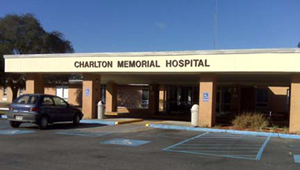May 27, 2015
The Business of Rural Hospital Closures
by Kate Menzies

Hospital closures are a hot-button issue in the world of healthcare. According to the Cecil G. Sheps Center, 47 rural hospitals closed from 2010-2014, in turn affecting more than 1.5 million people in their service areas. With small communities depending on hospitals not just for healthcare, but also for employment and economic gain, some officials are studying the impacts and ramifications of these closures.
Charles Owens, executive director of the Georgia Department of Community Health, State Office of Rural Health, has researched extensively on this topic. In his studies, he has come across some main contributors for closures.
Keeping the Doors Open
A lack of utilization is perhaps the most obvious reason that a hospital closes its doors.
"Hospitals are a volume-based business," said Owens. "There is a level of profitability that is essential to be able to survive, as it is with any business."
Hospitals are a volume-based business. There is a level of profitability that is essential to be able to survive, as it is with any business.
Hospitals must begin having honest conversations about the different things they want, need, and can financially support. Hospitals also need to look at the services they provide and determine which are necessary and sustainable, and which are not. An evaluation needs to take place to find the main sources of revenue. Hospitals can use this information to tailor their offerings, while being mindful of expenses.
Secondly, Owens acknowledges that our culture is more mobile than it ever has been, making it necessary for hospitals to differentiate their offerings and compete for customers more aggressively than ever.
While a hospital may hope good publicly-reported quality measures are sufficient for patients, Owens says, "Consumers associate aesthetics with higher quality care; our hospitals must be able to compete on both fronts."
Due to our mobile culture, Owens described how some patients don't mind traveling to other hospitals as they seek the level and perceived quality of care they desire. Part of the marketing strategy for rural facilities can be reminding residents that, in order for the hospital to be there when they have an urgent need, they have to support it on a routine basis, just like any other business. But that message isn't enough. Rural hospitals also should promote the ways in which they are unique to attract patients, such as by emphasizing quality, customer service, specialty providers/services, and new technology.
Owens mentioned that healthcare, as a whole, hasn't necessarily adapted to the market, which can potentially contribute to a hospital's downfall. Those who live in rural communities, especially younger residents, have adopted more technology and are more likely to be aware of the availability of competing services and demand care that they perceive to be superior; rural hospitals must be that "hospital of choice". While rural hospitals have the advantage of being a convenient option for patients in their communities, if patients fail to see the advantages of physical, in-person appointments over the growing options for virtual care, rural hospitals and associated clinics can be in danger of losing business.
Technology can also work to a hospital's advantage.
"Technology works great when it's affordable and there is a benefit and cost savings, such as with electronic medical records," said Owens.
It can also assist hospitals by allowing greater efficiency. Failure to utilize technology can contribute to a hospital's decreased volume and revenue.
Finally, rural communities have a difficult time recruiting professionals, which influences the types of services local hospitals can provide. Local hospitals and communities alike have to create ways to incentivize healthcare professionals to practice in their areas.
When Rural Hospitals Close
According to the Sheps Center, the states that have seen the most rural hospital closures include Texas, Georgia, and Alabama. Owens speculated that these areas may experience a high number of rural closures due to the close proximity of nearby hospitals, higher poverty levels, poor local health, and greater reliance on Medicare/Medicaid. These factors, combined with the population's high demand for services, make it hard for rural hospitals to keep their doors open.
"It's hard to manage a physician practice in an area where the patient population has high percentages of patients with lower paying government coverage. Those markets are challenging to maintain a financially viable medical practice," said Owens.
Unfortunately, some hospitals have no choice but to close. In those instances, Owens said it is crucial that they communicate with regulatory agencies at the state and federal level, give employees adequate notice of the impending closure, and provide information to the public on what is happening and where they can receive service. In addition, hospitals have to follow procedures on taking down hospital road signs and disposing of hazardous chemicals.
Hospital closures have ripple effects and put strains on other local programs, such as emergency medical services (EMS). When a rural hospital closes, EMS may become the main source of healthcare for the area. As a result, demand increases and the EMS staff may spend more time transporting patients to distant hospitals.
So what can hospitals do to stay afloat during the country's massive string of closures? Owens' solution: operate hospitals more like businesses.
As such, hospitals will have to secure local utilization by appealing to shrewd healthcare shoppers. This may involve changes to existing mindsets, operations, and services provided. For Owens, the bottom line is, "rural hospitals must become hospitals of choice."
